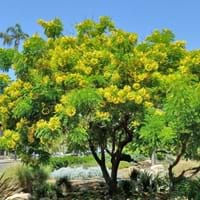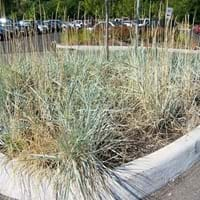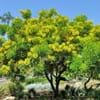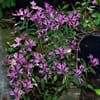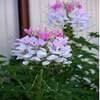Life Span
Perennial
Perennial
Type
Flowering Plants, Tree
Grass
Origin
Brazil
Europe, Northern Europe, Western Europe, Asia, Central Asia, Western Asia
Types
Not Available
Blue Lyme Grass
Habitat
Not Available
Clay soil areas, Loamy soils, Sandy areas, sandy seeps, Well Drained
USDA Hardiness Zone
Not Available
4-10
AHS Heat Zone
Not Available
10 - 1
Sunset Zone
Not Available
A2, A3, 1a, 1b, 2a, 2b, 3a, 3b, 4, 5, 6, 7, 8, 9, 14, 15, 16, 17, 18, 19, 20, 21, 22, 23, 24
Habit
Upright/Erect
Spreading
Flower Color
Yellow
Creamy Yellow
Flower Color Modifier
Bicolor
Bicolor
Fruit Color
Not Available, White
Not Available
Leaf Color in Spring
Dark Green
Blue Green, Steel Blue
Leaf Color in Summer
Dark Green
Light Green
Leaf Color in Fall
Dark Green
Light Yellow, Pink, Steel Blue
Leaf Color in Winter
Dark Green
Tan
Leaf Shape
Pinnate
Grass like
Plant Season
Spring, Summer, Fall
Summer, Fall
Sunlight
Partial shade, Full Shade
Full Sun, Partial Sun
Type of Soil
Loam
Clay, Loam, Sand
The pH of Soil
Acidic, Neutral, Alkaline
Acidic, Neutral, Alkaline
Soil Drainage
Well drained
Well drained
Bloom Time
Indeterminate, Summer
Summer, Late Summer
Tolerances
Drought
Pollution, Drought, Salt
Where to Plant?
Ground
Container, Ground, Pot
How to Plant?
Seedlings, Stem Planting
Root Division, Rooted stem cutting, Seedlings
Plant Maintenance
Medium
Medium
Watering Requirements
Requires regular watering
Average Water Needs, occasional watering once established
In Summer
Lots of watering
Lots of watering
In Spring
Moderate
Moderate
In Winter
Average Water
Average Water
Soil pH
Acidic, Neutral, Alkaline
Acidic, Neutral, Alkaline
Soil Type
Loam
Clay, Loam, Sand
Soil Drainage Capacity
Well drained
Well drained
Sun Exposure
Partial shade, Full Shade
Full Sun, Partial Sun
Pruning
Requires very little pruning
No pruning needed in the early stages, Prune grass to maintain level, Remove damaged leaves, Remove dead branches, Remove dead leaves
Fertilizers
All-Purpose Liquid Fertilizer
All-Purpose Liquid Fertilizer, fertilize in spring
Pests and Diseases
Red blotch, Thripes
Red blotch
Plant Tolerance
Drought
Drought, Pollution, Salt
Flowers
Yes
Insignificant
Flower Petal Number
Single
Single
Foliage Texture
Bold
Coarse
Foliage Sheen
Matte
Matte
Attracts
Not Available
Butterflies
Allergy
Not Available
Pollen
Aesthetic Uses
Showy Purposes
Ground Cover, Landscape Designing
Beauty Benefits
Not Available
Not Available
Edible Uses
No
Insignificant
Environmental Uses
Air purification
Air purification, soil erosion prevension on hill slopes, soil stabilisation
Medicinal Uses
No Medicinal Use
Not Available
Part of Plant Used
Whole plant
Stem
Other Uses
Used as Ornamental plant
Used as Ornamental plant
Used As Indoor Plant
No
No
Used As Outdoor Plant
Yes
Yes
Garden Design
Shady Tree, Showy Tree
Mixed Border
Botanical Name
Cassia leptophylla
LEYMUS arenarius 'Blue Dune'
Common Name
gold medallion tree
Blue Dune Lyme Grass, Sand Ryegrass
In Hindi
gold medallion tree
Blue Dune Lyme Grass
In German
gold medallion tree
Blau Dune Lyme Grass
In French
gold medallion tree
Bleu Dune Lyme Herbe
In Spanish
árbol medallón de oro
Azul Duna hierba de Lyme
In Greek
χρυσό δέντρο μετάλλιο
Μπλε Dune Lyme Grass
In Portuguese
árvore medalhão de ouro
Azul Dune Lyme grama
In Polish
Drzewo Medalion złota
Niebieska Trawa Dune z Lyme
In Latin
aureus arbore
Blue Dune Lyme Grass
Phylum
Magnoliophyta
Magnoliophyta
Class
Magnoliopsida
Liliopsida
Clade
Angiosperms, Eudicots, Rosids
Angiosperms, Commelinids, Monocots
Tribe
Not Available
Triticeae
Subfamily
Not Available
Pooideae
Number of Species
Not Available
Not Available
Importance of Cassia Leptophylla and Blue Dune Lyme Grass
Want to have the most appropriate plant for your garden? You might want to know the importance of Cassia Leptophylla and Blue Dune Lyme Grass. Basically, these two plants vary in many aspects. Compare Cassia Leptophylla and Blue Dune Lyme Grass as they differ in many characteristics such as their life, care, benefits, facts, etc. Every gardener must at least have the slightest clue about the plants he wants to plant in his garden. Compare their benefits, which differ in many ways like facts and uses. The medicinal use of Cassia Leptophylla is No Medicinal Use whereas of Blue Dune Lyme Grass is Not Available. Cassia Leptophylla has beauty benefits as follows: Not Available while Blue Dune Lyme Grass has beauty benefits as follows: Not Available.
Compare Facts of Cassia Leptophylla vs Blue Dune Lyme Grass
How to choose the best garden plant for your garden depending upon its facts? Here garden plant comparison will help you to solve this query. Compare the facts of Cassia Leptophylla vs Blue Dune Lyme Grass and know which one to choose. As garden plants have benefits and other uses, allergy is also a major drawback of plants for some people. Allergic reactions of Cassia Leptophylla are Not Available whereas of Blue Dune Lyme Grass have Pollen respectively. Having a fruit bearing plant in your garden can be a plus point of your garden. Cassia Leptophylla has no showy fruits and Blue Dune Lyme Grass has no showy fruits. Also Cassia Leptophylla is flowering and Blue Dune Lyme Grass is not flowering . You can compare Cassia Leptophylla and Blue Dune Lyme Grass facts and facts of other plants too.
